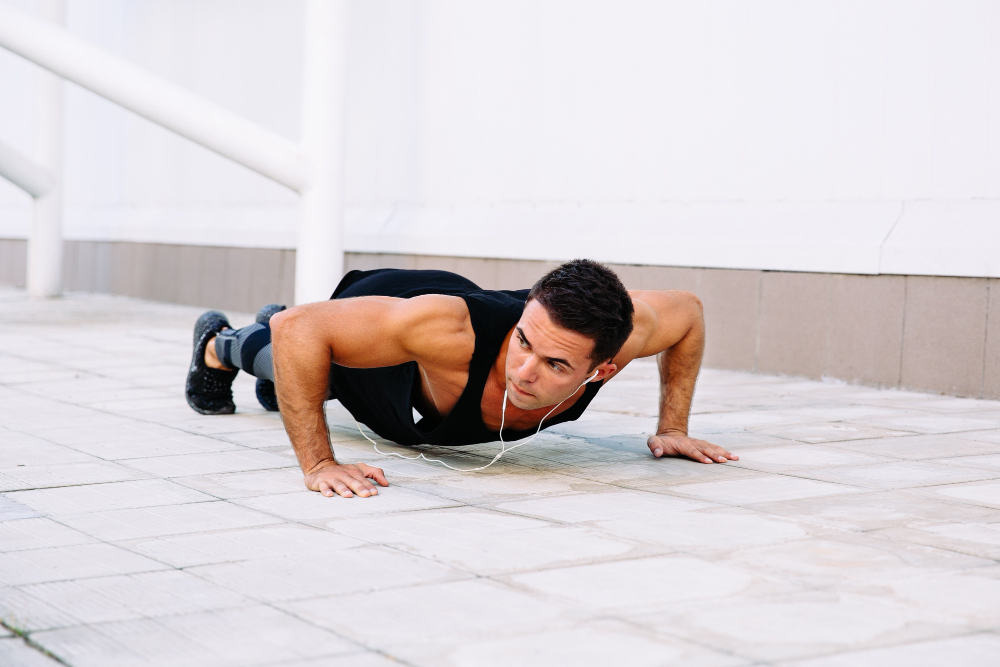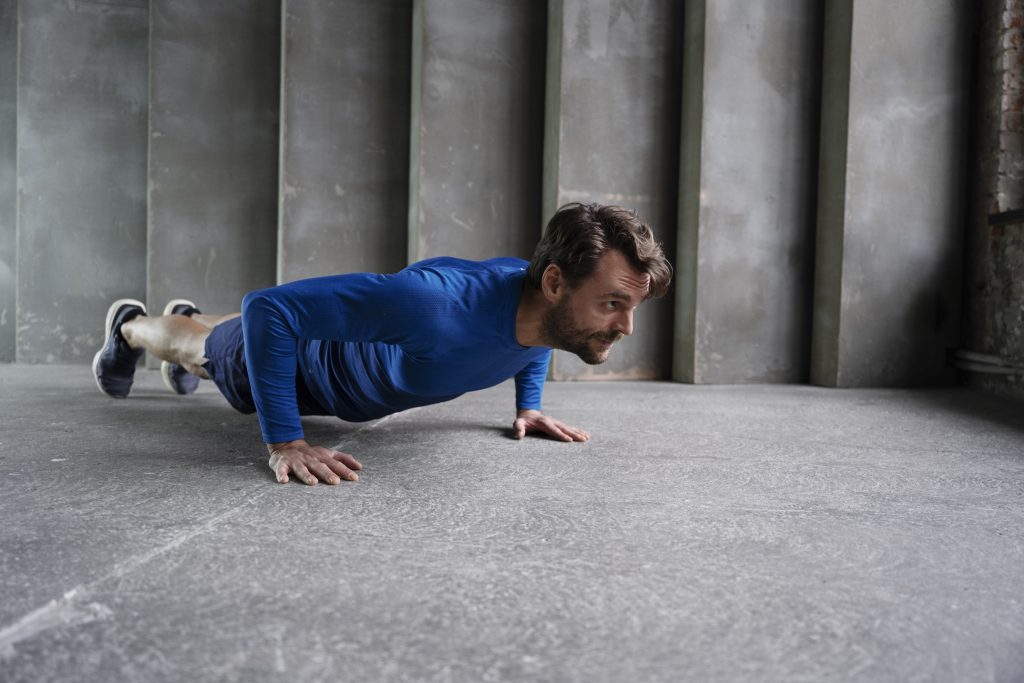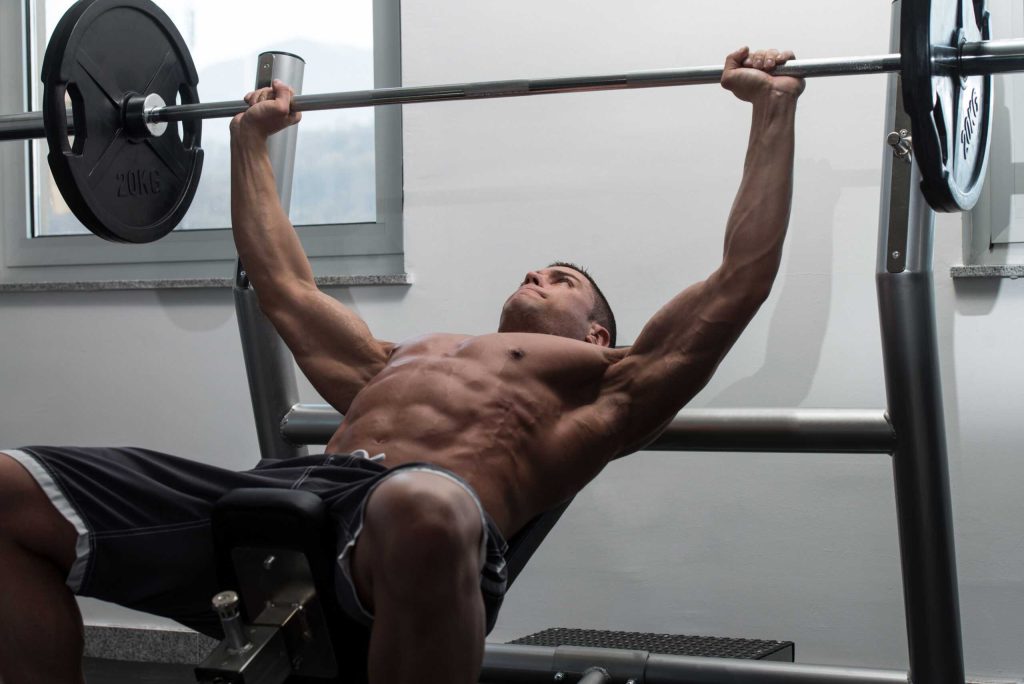The push-up appears to be the most straightforward exercise for most people. In a prone posture, you lower yourself until your chest hits the floor with your hands, then you raise yourself back up and repeat. Although not everyone is strong enough or skilled enough to perform them, most people are aware of what a push-up looks like. It’s not very mysterious at all.
Push-ups include more than merely pressing against the ground, though. To get the most out of the exercise and maximise your results, proper form is crucial.
How to Perform a Push-Up
Put yourself in the push-up position by locking your elbows, keeping your hands shoulder-width apart, flat on the ground, your toes planted, your torso and legs straight, your core firm, and your body parallel to the ground.
Touching your chest to the ground, lower yourself to the floor.
Squeeze your pectoral muscles, push yourself back up, and go through the entire range of motion.
Continue at the top until your shoulder blades are fully extended and your elbows are firmly locked.
Repeat.
Advantages of Push-Ups

Though it may seem easy, the push-up is one of the best exercises you can do for your body because of its simplicity.
Whole Body Workout: Push-ups are an incredibly effective full-body exercise since they work for multiple muscle groups at once.
Strengthens Connective Tissue: Push-ups put stress on your bones, tendons, and other connective tissues, which helps to strengthen them in addition to working your muscles.
Boosts Core Stability: To properly do push-ups, your torso must remain stiff. It resembles performing a plank and a bench press simultaneously.
Boosts Upper Body Strength: Push-ups, especially the often-ignored serratus anterior muscle group, can significantly increase your upper body strength when performed on a regular basis.
Enhances Mobility: Push-ups increase your whole range of motion by putting your scapula, or shoulder blades, through their full range of motion.
Convenience: Push-ups may be performed anyplace there is a flat surface and don’t require any specialized equipment. You can perform a push-up if you have access to gravity and the ground.
Closed-Chain Exercise: Push-ups are a closed-chain exercise, as opposed to the open-chain bench press. This results in your hands remaining in the same position while your body moves. This can enhance joint stability and proprioception, which is the awareness of one’s own body’s relative position and the amount of effort required to move it.
Simple to Scale: To make push-ups easier, practise them against a wall or table. To make them tougher, raise your feet or even put on a weight vest. They can be scaled virtually indefinitely.
How to Do Push-Ups to Target Various Muscles
A common question is, “What muscles do push-ups work?” The most truthful response is, “All of them.” However, you might target different muscles more than others based on the type of push-up you use.
Triceps: Press your palms together more firmly. You will target your triceps more the more narrowly you position your hands. Try making a diamond shape with your hands on the ground to target your triceps effectively.
Shoulders: Perform pike push-ups, in which your body and legs form an inverted V. Compared to a standard push-up, this puts your torso in a more vertical position and targets your shoulders and triceps more. Placing your feet on a bench or table can intensify the attention on the shoulders. The greater your shoulder engagement, the more vertical your torso is.
Chest: Although all push-ups target the chest, you must extend the range of motion by going farther down the descent if you want to hit it hard. To enhance range of motion and highlight the chest, try knuckle push-ups, handle push-ups, ring push-ups, or even plain push-ups between two chairs (or dip bars, or stacked books).

Hands: Try \”gripping\” the ground with your hand during a standard push-up exercise rather than placing your hands flat on the ground. This works well to increase grip.
Typical Push-Up Errors
The problem is that most individuals are performing them incorrectly. Not only might doing them incorrectly reduce your results. It may also make you more vulnerable to injury.
Continue reading for some form corrections if you want to get the most out of your push-ups and emerge from them stronger, healthier, and more fit. These form guidelines are applicable to any type of pushup you perform.
Act as a rigid lever.
You are one solid human slab when performing a push-up. You\’re a wooden board. Your toes serve as the pivot on a lever that you are. Everyone who wants to be a good lever needs to tone their abs (as well as all trunk muscles), lumbar muscles, glutes, and quadriceps. Everything. Make sure your body stays taut and rigid. Imagine that your body, hips, and legs are in a straight line, as they should be. Keep the lever in place and that plank in place throughout the exercise.
You won\’t get the desired benefits if you relax during the exercise. You won\’t produce as much energy. Consider attempting to pry off a baseboard with a crowbar that is too floppy. It simply wouldn\’t function as well.
Be mindful of how you place your head.
You should be staring down at the ground directly in front of you, not forwards. This preserves the straight line from head to foot and puts your neck in a neutral position.
Avoid looking ahead. Glance downward.
Not flared out, but elbows in.
One of the main causes of shoulder soreness during the workout is internally-rotated shoulders, which is caused by flaring out your elbows. Most people who say “push-ups hurt my shoulders” are performing the exercise with their elbows flared and their internal rotation severely altered.
Verify the location of your hands.
When you put your hands on the floor, external rotation is a useful cue to keep your elbow and shoulder alignment correct. Your fingers should point out to the sides and your thumbs should point straight forwards. This safeguards your shoulders by making your elbows stay close to your torso.
At the peak, extend your shoulder blades.
Your shoulder blades should be fully extended—moved away from your spine—at the peak of the push-up. They will retract as you go down, bringing your shoulder blades closer to your spine and making them “packed in” against it. This guarantees a complete range of motion as well as healthy shoulders once more.
This is not the same as a bench press, when you retract your shoulder blades the entire time.
superior quality to quantity.
Put this in your mind so much that it seems like breathing: Speed is not as crucial as technique. Function comes from form. The main issue that many have with push-ups is that they focus more on quantity than quality.
Ten flawless, hard push-ups would be preferable to forty sloppy, hurried, easy push-ups. You will become stronger from the former. The latter will result in harm to you.
Consider your toes as a passive fulcrum to increase the difficulty of your push-ups:
Rather than “descending,” you turn your torso to face the earth by pivoting around your toes. Although this alteration is rather slight, it puts a tremendous amount of weight on your shoulders, triceps, and chest. Your hands will feel \”further back” than usual, and you’ll feel as though you\’re “leaning forwards.” Consider placing your shoulders on the ground as a further hint.
Everything else still holds true: maintain a solid plank position (remember, you’re a lever!), press all the way up, avoid doing partial reps, keep your elbows in, and move your shoulder blades with awareness.
The outcome is an upper body workout that is actually rather challenging. I think you’ll be pleasantly impressed with the outcomes, even if you probably won’t be able to perform 50 pushups as quickly as before and that you\’ll definitely wind up doing these more slowly than previously.
They also feel better on the joints, which is an added bonus.



